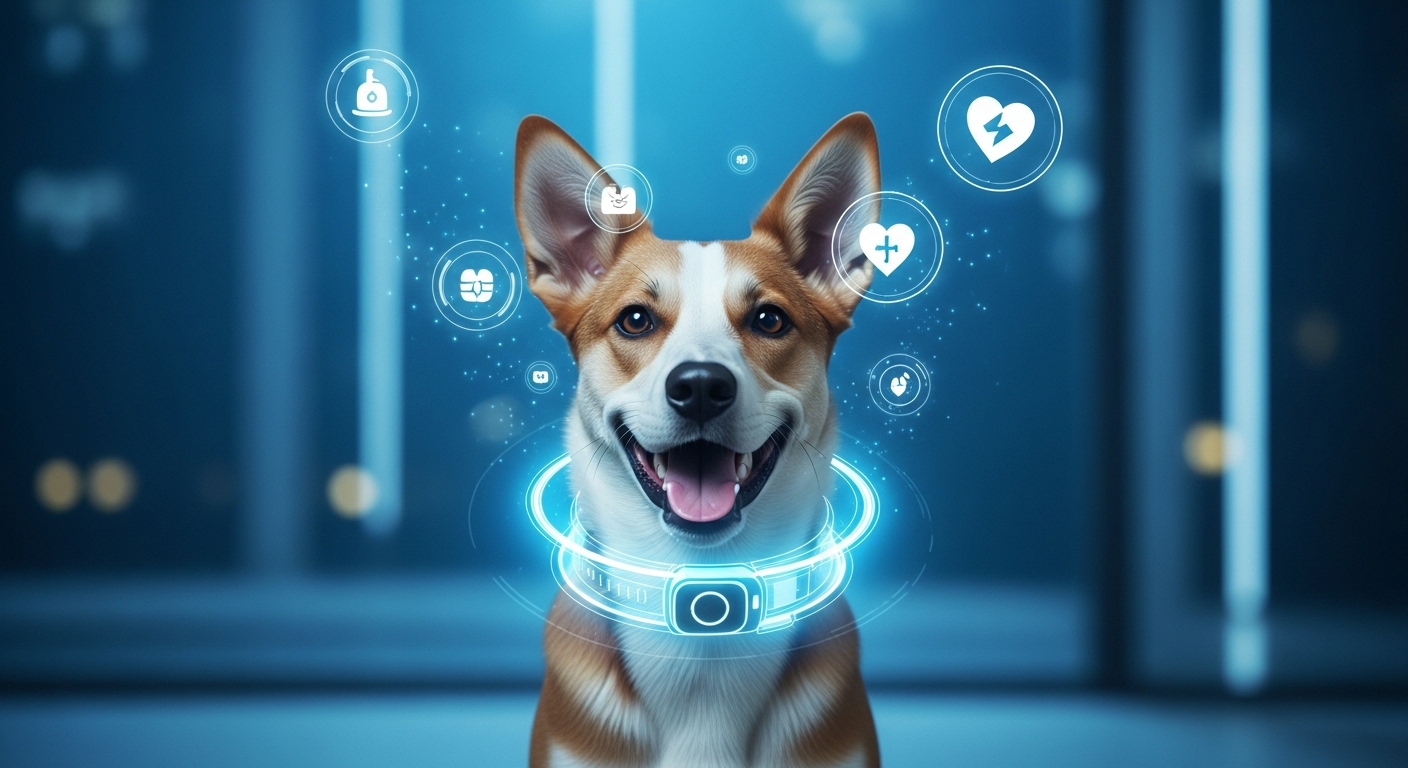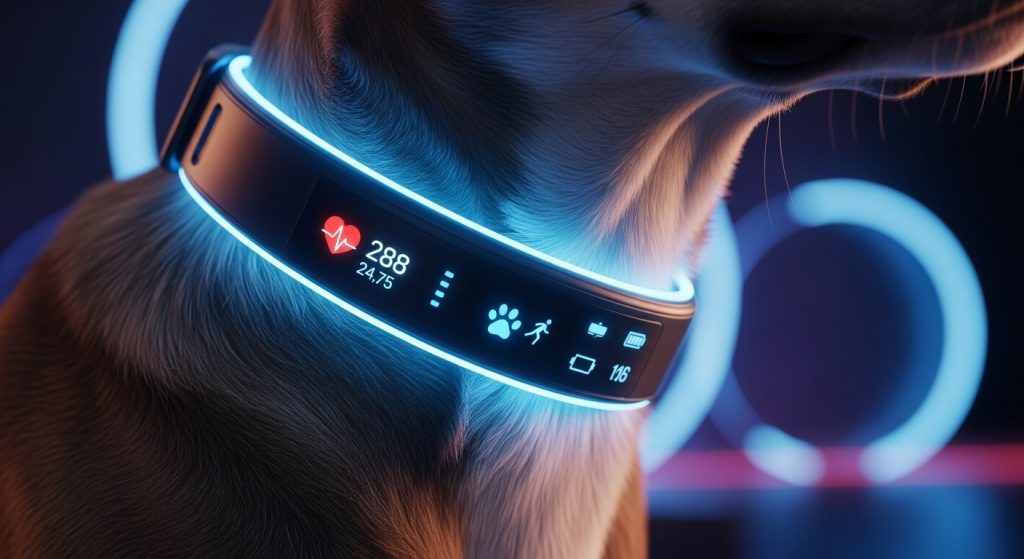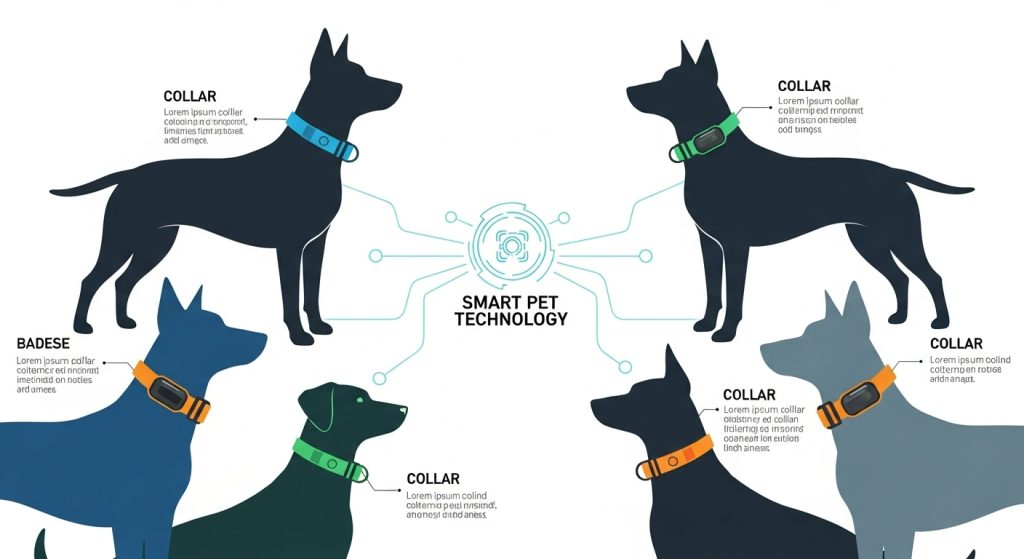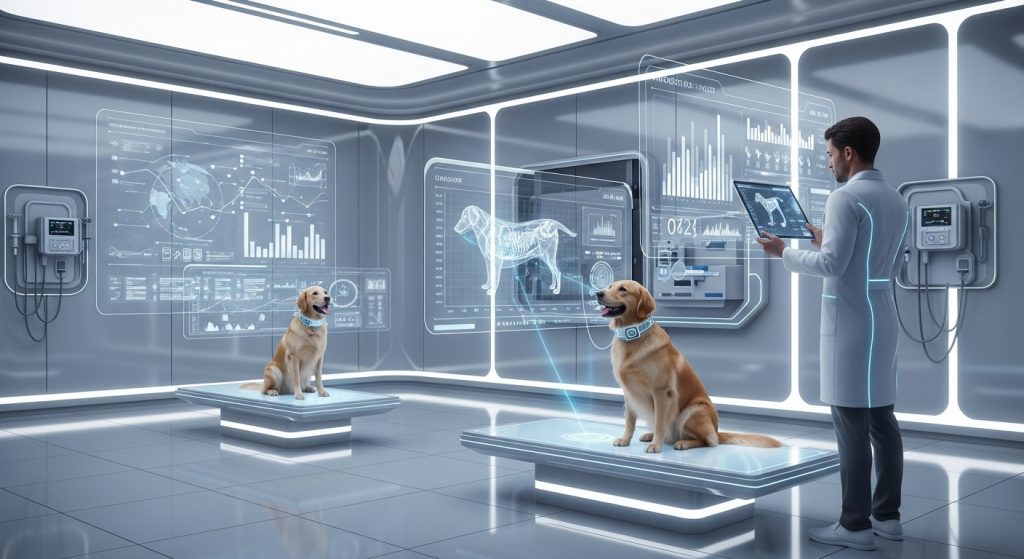Technology isn’t just changing human lives—it’s transforming the way we care for our pets. From GPS trackers to health-monitoring collars, dog wearables are becoming the next big wave in pet innovation. These smart devices help owners monitor their dog’s activity levels, heart rate, sleep quality, and even emotional state.
As our connection with dogs grows deeper, we seek ways to ensure they live longer, healthier, and happier lives. The result? A booming pet tech market that’s introducing next-generation dog wearables designed for health, fitness, and safety.
In this post, we’ll explore the future of dog wearables, look at how modern devices are reshaping pet care, and discuss the incredible potential these gadgets hold for both owners and veterinarians.
The Rise of Dog Wearable Technology
Just like smartwatches changed the way humans track health and fitness, dog wearables are revolutionizing pet care. These devices combine sensors, AI analytics, and cloud data to give real-time insights into a dog’s physical condition and activity.
1. What Are Dog Wearables?
Dog wearables are smart devices that can be attached to a collar, harness, or even implanted under the skin. They collect data such as:
-
Heart rate and temperature
-
Steps, distance walked, and sleep duration
-
Location via GPS
-
Stress and anxiety indicators (based on movement or heart rhythm)
2. Why Are Dog Wearables Growing in Popularity?
According to recent market reports, the global pet wearable industry is expected to exceed billions in value by the end of the decade. The growth is fueled by:
-
Increasing awareness of pet health and wellness
-
Rising cases of pet obesity and chronic diseases
-
A surge in connected pet ownership—owners who treat dogs as family members
-
Integration with mobile apps that provide instant feedback and alerts
3. Key Trends Shaping the Market
-
Smart Health Tracking: Wearables like FitBark and Whistle Health monitor vital signs and activity levels.
-
AI-Powered Insights: Devices use AI to detect early signs of illness or stress.
-
Cloud Integration: Data can be shared directly with veterinarians for proactive care.
-
Customization: Different dog breeds and lifestyles require personalized settings for accurate tracking.
Health, Fitness, and Safety — The Core of Dog Wearables
The next generation of dog wearables focuses on three pillars: health monitoring, fitness tracking, and safety assurance.
1. Health Monitoring Devices
Modern wearables are now capable of monitoring a dog’s heart rate, temperature, respiratory rate, and sleep cycles. This data helps detect early symptoms of potential health issues.
-
Example: The PetPace Smart Collar continuously tracks vital signs and sends alerts if abnormalities occur. It’s particularly useful for senior dogs or those with chronic conditions.
-
Future Outlook: In the coming years, advanced wearables may even perform non-invasive glucose monitoring, helping manage conditions like canine diabetes.
2. Fitness and Activity Tracking
Like fitness watches for humans, dog activity trackers measure steps, distance, and calorie burn. They help owners ensure their dogs get enough daily exercise based on breed, weight, and age.
-
Example: The Whistle Go Explore not only tracks activity but also sends insights about behavior, sleep quality, and even licking or scratching frequency—key signs of discomfort or allergies.
-
Why It Matters: Over 50% of dogs in the U.S. are overweight. Fitness tracking helps owners adjust diets and exercise routines for better health outcomes.
3. Safety and Location Tracking
Nothing is more terrifying than losing a dog. GPS-enabled wearables give real-time location data and geofencing alerts if a pet strays beyond safe zones.
-
Example: Tractive GPS Dog Tracker provides live location updates and tracks history through a smartphone app.
-
Emerging Features: Future wearables may integrate LTE, Bluetooth, and satellite tracking to ensure coverage even in remote areas. Some prototypes are exploring AI-based route prediction, alerting owners if their dog’s movement pattern indicates danger.
The Future of Dog Wearables — What’s Next?
The future of dog wearables is bright, intelligent, and deeply integrated into pet healthcare systems. Let’s explore what’s coming next.
1. Integration with Veterinary Platforms
Soon, smart collars will directly connect to veterinary databases. Real-time monitoring data will allow vets to:
-
Detect early signs of illness before symptoms appear.
-
Track recovery progress after surgeries.
-
Adjust treatment plans based on ongoing data.
This integration will shift pet care from reactive to proactive—catching problems before they become emergencies.
2. Biometric and Emotional Tracking
Upcoming wearables may measure not just physical health but also emotional well-being. Using AI-driven behavior analysis and heart rhythm data, they can detect stress, anxiety, or excitement levels in dogs.
This technology will help owners understand their dog’s emotional needs, improving bonding and reducing behavioral issues.
3. Sustainable and Comfortable Designs
Manufacturers are now focusing on eco-friendly materials, wireless charging, and lightweight designs for better comfort. Future devices may even use energy harvesting, powering themselves through motion or body heat.
4. Multi-Function Ecosystems
We can expect a unified ecosystem where one wearable connects to multiple smart devices:
-
Smart feeders adjust portion sizes based on activity.
-
Smart doors recognize the dog’s collar ID.
-
Smart beds monitor sleep patterns and adjust temperature automatically.
This ecosystem approach will redefine connected pet living—making technology seamlessly work for both pets and owners.
5. AI-Driven Predictive Health
Advanced algorithms could predict potential illnesses based on subtle behavioral or physiological changes. Imagine receiving an app notification:
“Your dog’s recent activity and heart rate patterns suggest early signs of fatigue. Schedule a vet visit?”
This predictive capability represents the true future of preventive veterinary care.
The world of dog wearables is evolving rapidly, combining technology and empathy to create smarter, healthier, and safer environments for our pets.
From health monitoring to GPS tracking and emotional analysis, these innovations are giving dog owners unprecedented insight into their pets’ lives.
As AI, cloud computing, and sensor technology continue to advance, the future of dog wearables promises a new era of connected care—one where every heartbeat, step, and wag matters.
So, whether you’re a tech-savvy pet parent or simply someone who loves their dog deeply, the future is clear: Smart technology means smarter, happier dogs.




